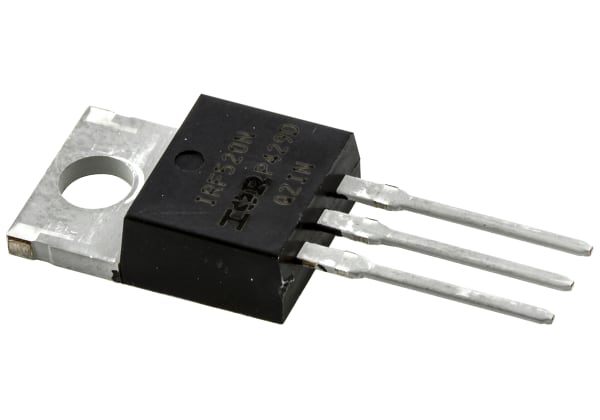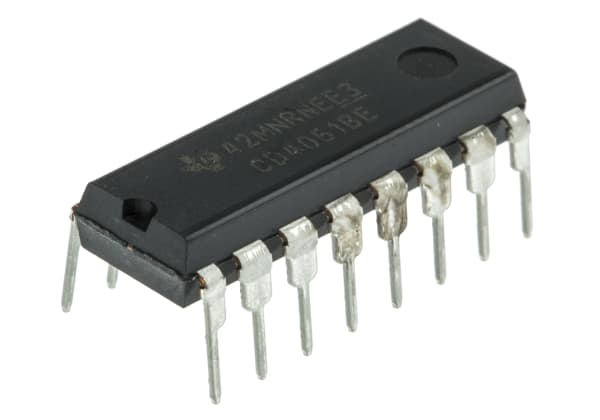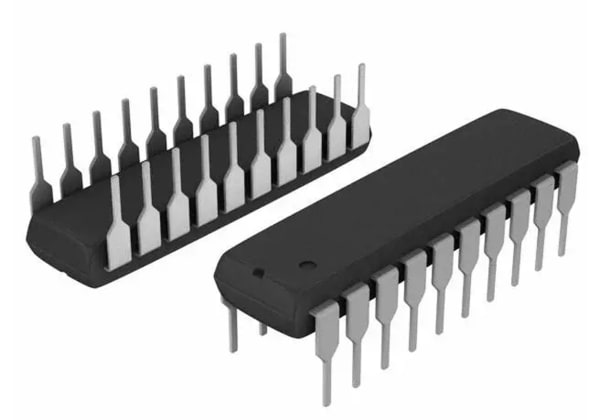- Published 5 Sept 2025
- Last Modified 5 Sept 2025
- 6 min
Guide to PCB Etching
PCB etching is a crucial step in printed circuit board creation. This guide explains what PCB etching is, looks at different techniques for it, and explains the equipment required.
PCB etching is a crucial step in the creation of a printed circuit board (PCB). PCB etching involves removing copper from the board to leave copper tracks necessary to make an electrical circuit. Understanding PCB etching is critical for anyone involved in PCB manufacturing. This guide explains what PCB etching is, looks at some of the different PCB etching techniques, and assesses the equipment, skills, and processes required to do PCB etching in both the workshop and factory. Read on to learn more.
What is a Printed Circuit Board (PCB)?
First, just what is a printed circuit board? PCBs are ubiquitous in electronics manufacturing. The PCB connects components in a circuit. PCBs are vital because they create electrical interconnections between the different parts of electronics devices. For example, they allow semiconductors to communicate with each other, among many other applications.
PCBs are typically sandwich constructions of conductive copper layers and insulation layers. Conductive tracks made of copper (known as ‘copper traces’), copper pads, and conductive planes electrically interconnect the components that enable an electronic device to function. Once the board is etched and complete, it is sent to assembly, and components are soldered onto it.
More complex PCBs feature lots of layers of conductive copper tracks and interconnections in sandwiches, along with the insulating layers. As electronic devices have become smaller, with increased functionality, components have also become smaller. In advanced PCB designs, they are tightly packed together.
What is PCB Etching?
So, what is PCB etching? PCB etching is a manufacturing process in which copper is removed, leaving only the copper traces needed on the board. PCB etching enables conductive paths between components to create an electrical circuit. Which chemical is used for PCB etching? Ferric chloride, an acidic PCB etching solution, is commonly used to etch PCBs. Etching prepares the PCB for the final stages of manufacture, although many other processes need to be carried out to complete the job.
PCB Chemical Etching Process
In the traditional chemical PCB etching methods, unwanted copper is removed from the PCB to create the desired copper traces with a chemical solution. The PCB is first coated with a photoresist material. UV light is shone through a film mask, which hardens the exposed areas of the PCB. When the board is submerged in PCB etching chemical, the unprotected copper is eroded, but the hardened areas are protected. The result is the required circuit pattern. Ferric chloride is the chemical of choice for large-volume PCB manufacturing because it is quick and efficient to use, but ammonium persulfate can also be used for chemical etching PCBs.
Other PCB Etching Techniques
As technology has developed, other PCB etching techniques have emerged. They include:
Plasma Etching
Plasma PCB etching uses a high-speed plasma stream to create a circuit. It’s an expensive process, but very precise and works on a small scale. Plasma etching advantages include being environmentally friendly - it was created to reduce the liquid waste disposal required in chemical etching. Plasma etching is also a cleaner process because it removes organic residue from the PCB’s copper surface.
During the plasma etching process, two electrodes are used: one for radio frequency generation and a ground electrode. The etching gas, which may be oxygen, carbon tetrafluoride, or another gas, is ionised by the radio frequency electrode, which works at 13.56 MHz. The radio frequency electrode excites electrons and changes their state, creating high-speed plasma pulses for etching. Chemical reactions between the plasma and the material being etched modify the material to create the circuit.
Plasma etching rose to prominence in the 1970s. As well as etching PCBs, plasma-etching technology is often used to process semiconducting materials, enabling small features to be etched into their surfaces before use in electronics devices.
Photochemical Etching
Photochemical etching is a precise method that utilises special chemicals to etch complex designs on a metal sheet. It is widely used in the electronics industry to create computer processors by using photographic and chemical techniques to create the desired circuit.
Photochemical etching starts with creating a design image. Areas to be removed or protected are determined using photographic methods. When a specially formulated chemical solution is applied, material is removed from the areas that aren’t protected to create the part. As well as PCBs and computer processors, photochemical etching can produce plasma generators, optics, and coatings.
Laser PCB Etching
Laser etching or laser marking is a versatile process that can be applied to most metals to create parts or markings by melting the surface of the material. Lasers are often used for cutting, sintering, drilling, and marking PCBs. When marking, the laser beam focuses a lot of energy on a tiny area to create copper traces. Laser marking expands the material, which can be coloured black, grey, or white. That’s why laser etching is often used to produce permanent markings such as serial numbers, barcodes, and logos.
Electroless Copper Deposition
Electroless copper plating is another PCB etching technique. It involves depositing an even layer of copper on a metal or plastic substrate. The board is dipped in a water solution containing copper salts and formaldehyde.
Electroless plating works because of the chemical reaction between the substrate and the metal ions in the copper salt/formaldehyde solution. This process is particularly appropriate for producing PCBs with finer, thinner copper traces. Electroless plating creates a uniform coating even on complex shapes. Other advantages of this technique include resistance to corrosion and wear. As well as electronics, electroless copper plating is commonly used in automotive, oil and gas, and aerospace.

PCB Etching & Preparation Machines
PCB etching machines create copper paths on the PCB via chemicals, lasers, or plasma to remove excess copper. There are different types of PCB etching machines on the market, depending on the type of process you require. Machines using a wet etching process dissolve unwanted copper thanks to chemical reactions using acid (usually ferric chloride or cupric chloride) or alkaline solutions. Alkaline PCB etching equipment is notable for its speed and cost-effectiveness, but the process must be carefully controlled to avoid damaging the PCB.
Meanwhile, dry PCB manufacturing processes include laser and plasma machines. Laser-etching machines use high-power lasers to mark out copper traces on the PCB substrate. Laser PCB etching machines reduce PCB manufacturing steps, meaning toxic chemicals don’t have to be used. However, they are more expensive than chemical etching machines. Plasma etching machines enable very precise control, but like lasers, the process is expensive. That means the manufacturer must produce very large volumes of PCBs via the plasma method for it to be economical.
Other PCB Etching Equipment
Other small-scale PCB etching equipment includes a PCB etching kit. PCB developing kitsand etching accessories enable enthusiasts and small businesses to design bespoke boards and practise manufacturing them in the home or workshop.
Etching solutions and chemicals include ferric chloride, etch resist pens, and etching machines. PCB etching kits help users practise skills such as cleaning copper board, etching, drilling, soldering, and engraving. This is helpful if you are trying to create multiple PCB prototypes, where you may need to do various iterations of a design. We also carry transparencies and exposure units, which enable the printing of transparencies on inkjet printers for PBC design, and water de-ionisers, which provide high-purity water for the manufacturing process.
With access to your own PCB etching equipment and accessories, you can develop the prototype yourself without employing an external PCB manufacturer. You’ll soon experiment with your own custom designs and learn more about PCB design and manufacturing.
Did you know we offer a wide variety of PCB etching equipment? Explore our range to find out more.



